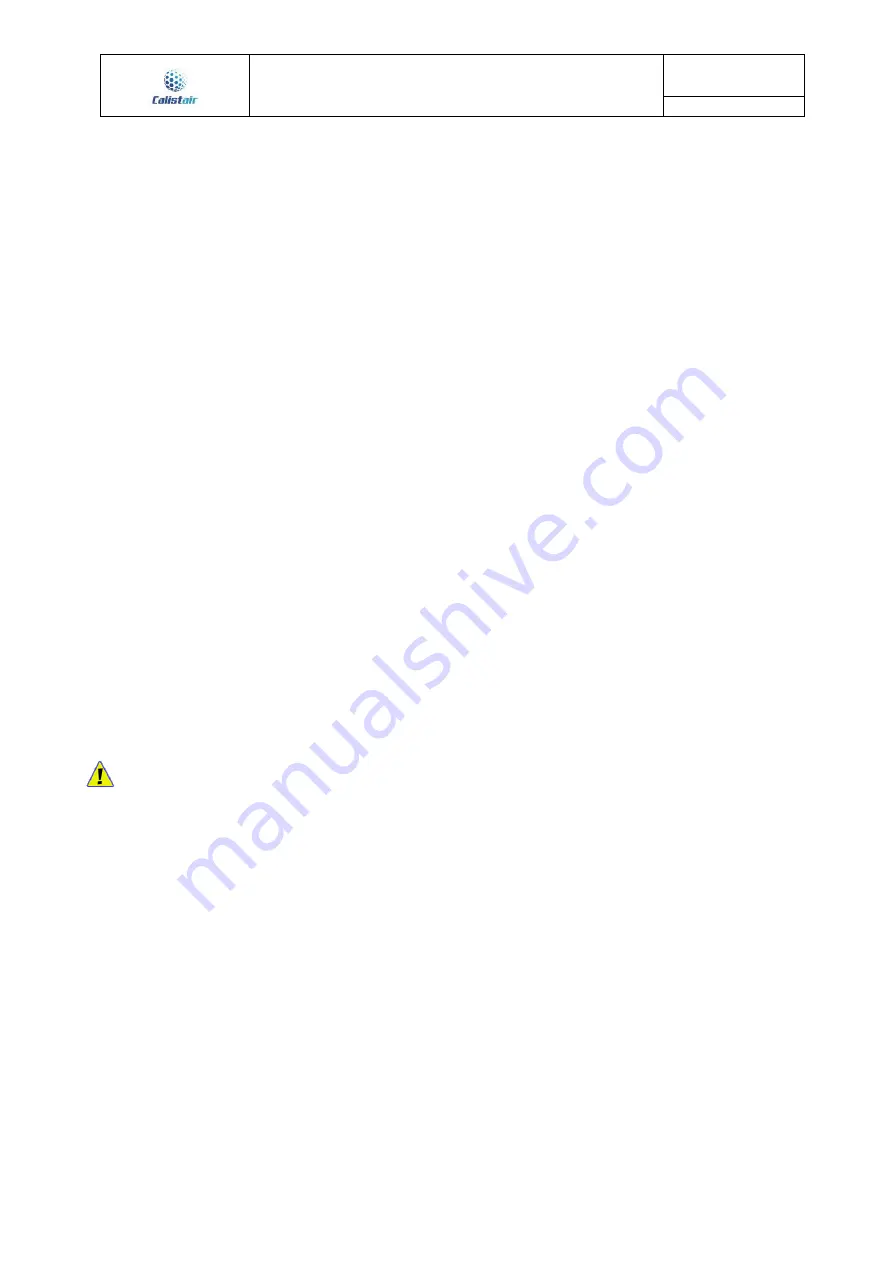
User guide
R4000
MOBILE AIR HANDLING UNIT
Version: 2.4
Update: 06/2019
Page 18 / 21
3.2
Changing the particulate filters
The efficiency of the appliance depends on the condition of the particulate filters. The more clogged
the filters are (and therefore the more the pressure losses increase), the more the fan has to compensate
for these pressure losses by increasing its power. The electricity consumption thus increases and if nothing
is done, the air flow will finally decrease and there is a risk of the motorised impeller breaking down.
The average frequency for changing the particulate filters is three to six months for the G4 filter, six
to twelve months for the F8 filter, 18 months for the adsorbent filter and 36 months for the H14 absolute
filter. It depends on the amount of dust and pollution in your environment and the frequency of use of the
appliance. The PLC manages warnings in case of clogging of one or more filters.
•
Open the R4000 access door after shutting down the appliance (shutdown procedure paragraph
2.2.1.5),
•
Remove the used G4 and F8 filters,
•
Replace them with new filters in the spaces provided for this purpose in the following filtration order:
G4 first then F8 second. Warning: observe the airflow direction indicated on the F8 filters,
•
Change the adsorbent filter by opening the cams on each side. Remove it and replace it with a new
one (supplied by CALISTAIR). Close the cams on each side,
•
Change the absolute filter by operating the cams. Slide the used filter in its drawer. Replace it with
a new one (supplied by CALISTAIR). Slide it upwards until it is against the seal and operate the cams
to guarantee that the filter is completely sealed.
Used particulate filters cannot be recycled due to the impurities they contain. To determine the type
of this waste (non-hazardous, infectious, etc.), consult your Health, Safety and the Environment manager.
3.3
Changing the catalysts
The average life time of a catalyst is three years.
•
Open the R4000 access door after shutting down the appliance (shutdown procedure paragraph
2.2.1.5).
•
Remove the used catalyst frames.
•
Replace them with new catalysts (supplied by CALISTAIR).
Do not touch the catalyst. The used catalyst is non-toxic. Therefore there are no other particular
precautions to be taken. Treat the catalyst and its frame as standard metal waste.


















